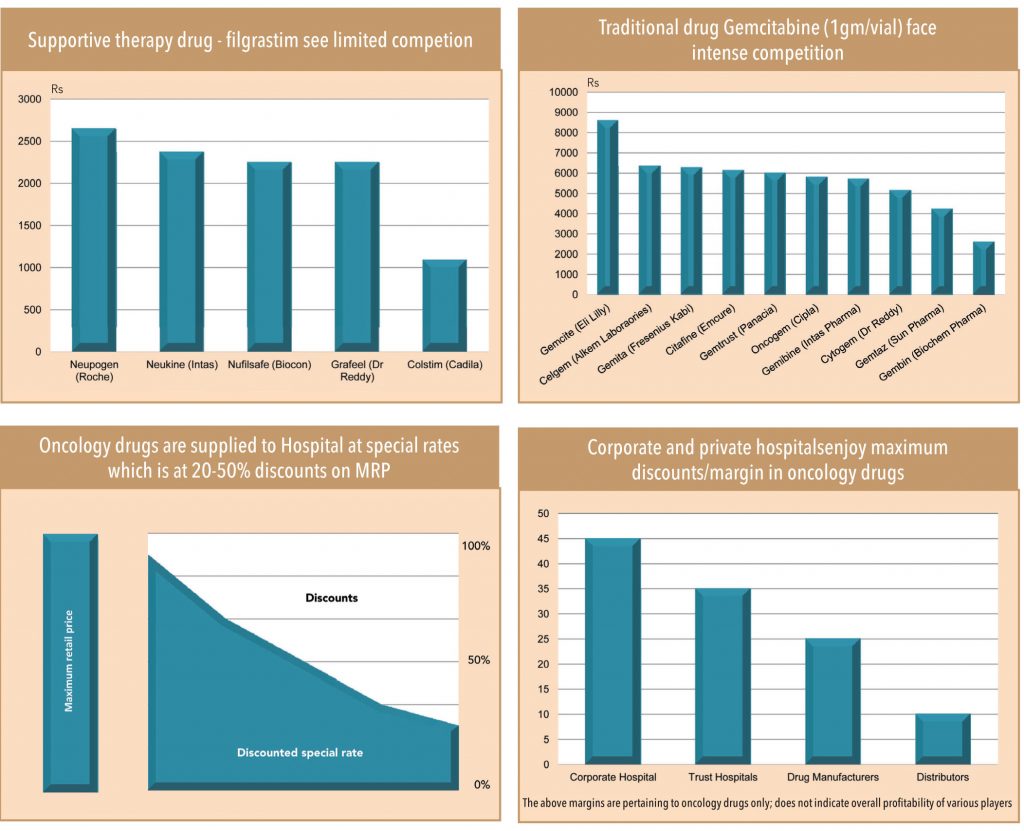Due to the lifesaving nature of oncology drugs, there is an inherent price-in elasticity in demand. Price plays a very limited role in the success of an oncology brand, as R&D/manufacturing, capability of the manufacturer, its quality standards, and most importantly, the acceptance of the drug by the oncologists matter a lot in brand creation.
Within oncology products, there is a wide gap in the prices of similar products in a particular category— this is primarily due to different R&D effort, quality parameters, and documental initiatives. But the most surprising fact of oncology product prices is that the ‘maximum retail price’, which is considered to be the benchmark for all industries, is not the price at which drugs are bought and sold!
Since hospitals account for 80% of oncology drug purchases, it is the undisclosed ‘special rate’provided by drug manufacturers that plays an important role in grabbing market share. Since hospitals are major buyers, and because there are limited number of cancer hospitals in India, the suppliers/manufacturers have limited bargain power or none at all. Based on the opportunity size and volume of supply, companies offer huge discounts against MRP.
While these special discounts differthey are as high as 50% for traditional products where there is relatively higher competition and about 20-30% for biologic drugs. In differentiated products like biologics/biosimilars and targeted therapies, where the technical entry barrier is high, margins are protected. Most private hospitals do not pass on the lower drug procurement prices to patients.



Corporate and private hospitalsenjoy maximum discounts/margin in oncology drugs followed by trust hospitals (who pass on a portion of the special discount to patients), manufacturers, and distributors.Mr Mitesh Shah, Director of Milton Lifecare,reckons that the distribution margin on traditional oncology drugs is 8% and on biologic/biosimilar products it is 8-10%.
Subscribe to enjoy uninterrupted access